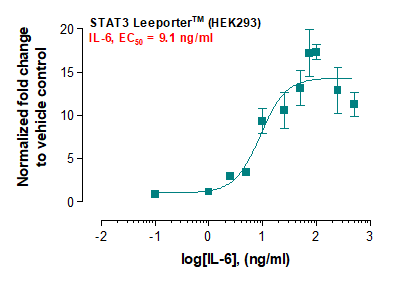Recombinant Human CLEC14A Protein, His Tag
Shipping Info:
For estimated delivery dates, please contact us at [email protected]
| Amount : | 50 µg |
| Content : | Lyophilized from sterile PBS, pH 7.4. Normally 5 % - 8% trehalose is added as protectants before lyophilization. |
| Storage condition : | Store at -20°C to -80°C for 12 months in lyophilized form. After reconstitution, if not intended for use within a month, aliquot and store at -80°C (Avoid repeated freezing and thawing). Lyophilized proteins are shipped at ambient temperature. |
| Uniprot ID : | Q86T13 |
| Alternative Name : | C14orf27, CEG1, EGFR-5 |
Molecular Characterization: CLEC14A(Glu22-Ala397) 6×His tag
Molecular weight: The protein has a predicted molecular mass of 40.7 kDa after removal of the signal peptide. The apparent molecular mass of CLEC14A-His is approximately 70-100 kDa due to glycosylation.
Description: Recombinant human CLEC14A protein with C-terminal 6×His tag
This gene encodes a member of the C-type lectin/C-type lectin-like domain (CTL/CTLD) superfamily. Members of this family share a common protein fold and have diverse functions, such as cell adhesion, cell-cell signalling, glycoprotein turnover, and roles in inflammation and immune response. This family member plays a role in cell-cell adhesion and angiogenesis. It functions in filopodia formation, cell migration and tube formation. Due to its presence at higher levels in tumor endothelium than in normal tissue endothelium, it is considered to be a candidate for tumor vascular targeting.
Molecular weight: The protein has a predicted molecular mass of 40.7 kDa after removal of the signal peptide. The apparent molecular mass of CLEC14A-His is approximately 70-100 kDa due to glycosylation.
Description: Recombinant human CLEC14A protein with C-terminal 6×His tag
This gene encodes a member of the C-type lectin/C-type lectin-like domain (CTL/CTLD) superfamily. Members of this family share a common protein fold and have diverse functions, such as cell adhesion, cell-cell signalling, glycoprotein turnover, and roles in inflammation and immune response. This family member plays a role in cell-cell adhesion and angiogenesis. It functions in filopodia formation, cell migration and tube formation. Due to its presence at higher levels in tumor endothelium than in normal tissue endothelium, it is considered to be a candidate for tumor vascular targeting.
|
There are currently no product reviews
|





















.png)














